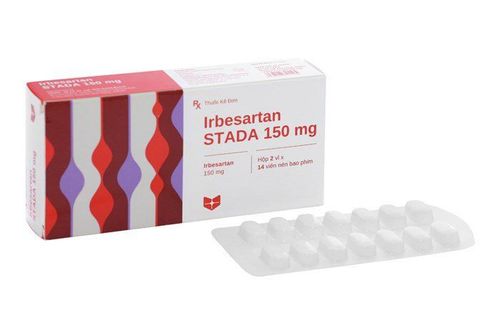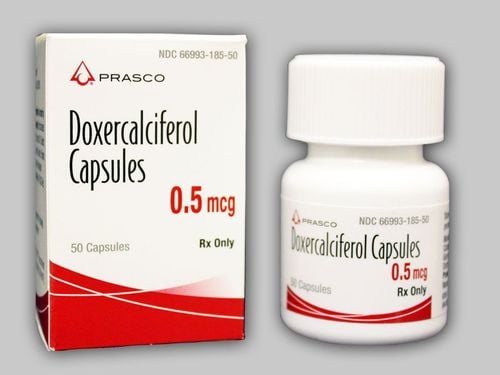This is an automatically translated article.
Diuretics are commonly prescribed to treat sodium, potassium, volume depletion, and hypertension characteristic of chronic kidney disease. Because diuretics come in many different classes, for their effective use in chronic kidney disease, clinicians must understand the differences in the pharmacokinetics and pharmacodynamics of each drug class.
1. What is chronic kidney disease?
Chronic kidney disease is a worldwide public health problem and has major social and economic impacts. The problem is exacerbated in developing countries.
Chronic kidney disease is defined as abnormalities in kidney structure or function, present for more than 3 months, that affect health. Criteria for chronic kidney disease are signs of kidney damage (appearance of albuminuria, abnormalities in urinary sediment, electrolytes and other abnormalities due to tubular disorders, abnormalities detected by histology, usually structural findings on imaging and history of kidney transplantation) or decreased glomerular filtration rate (GFR) (<60 mL/min/1.73 m2) (according to KDIGO 2013 recommendations).
Chronic kidney disease can cause complications that are comorbidities such as heart disease, anemia, and bone and joint disease. Fortunately, disease progression can be improved with appropriate therapies and lifestyle changes.

Bệnh thận mãn tính là một vấn đề sức khỏe cộng đồng trên toàn thế giới và có những tác động lớn đến xã hội và kinh tế
2. Indication of diuretics for people with chronic kidney disease
The main use of diuretics in chronic kidney disease is to lower blood pressure and treat swelling. Furthermore, diuretics facilitate the effects of ACE inhibitors and other antihypertensive agents to reduce the risk of coronary heart disease in individuals with chronic kidney disease. At the same time, diuretics can also help control potassium levels in people with high potassium levels. Therefore, long-acting diuretics co-administered with antihypertensive drugs have been shown to increase patient adherence to medication, which improves disease prognosis.
There are three main types of diuretics: Thiazides, loop diuretics, and potassium-sparing diuretics. Different types of diuretics have different mechanisms of action. Thiazide diuretics act on the distal tubule; Loop diuretics are on the loop of Henle and potassium-sparing diuretics are on the collecting duct.
Commonly used thiazide diuretics include chlorthalidone, hydrochlorothiazide, indapamide, and metolazone. The long-acting nature of chlorthalidone provides better blood pressure control (1.5 to 2 times stronger) than hydrochlorothiazide; however chlorthalidone leads to a higher risk of hypokalemia. The absorption of metolazone is poor and therefore appropriate titration is required, especially in patients with chronic kidney disease.
Bumetanide, furosemide and torsemide are commonly used loop diuretics. The bioavailability of loop diuretics is not affected by the presence of chronic kidney disease. Loop diuretics should be reserved for clinically significant fluid overload (eg, heart failure and significant fluid retention with vasodilators) or progressive renal failure and can be combined with medication. thiazide-type diuretics.
Commonly used potassium-sparing diuretics are triamterene, amiloride, spironolactone and eplerenone. These drugs are further classified as epithelial sodium channel blockers and mineralocorticoid receptor blockers. The choice of drug depends on the severity of the disease; As the severity increases, people who are on thiazides are switched to loop diuretics or to combination drug therapy.

Công dụng chính của thuốc lợi tiểu trong bệnh thận mạn là làm giảm huyết áp và điều trị chứng sưng phù
3. Things to pay attention to when using diuretics for people with chronic kidney disease
Adverse events associated with diuretic use are dose-dependent, including hypotension, decreased glomerular filtration rate, electrolyte abnormalities, and hyperkalemia.
Regarding treatment goals, guidelines recommend that blood pressure control measures be maintained below 140/90 mmHg for hypertensive patients younger than 60 years of age, diabetes, or chronic kidney disease. non-diabetic while the 2013 KDIGO guidelines recommend a blood pressure level of less than 130/80 mmHg for patients with albumin excretion ≥ 30 mg/24 h. Furthermore, it is also recommended that blood pressure control in patients with chronic kidney disease be initiated with diuretics or in addition to other antihypertensive therapies with ACE inhibitors or angiotensin receptor blockers. improves renal outcomes in patients with chronic kidney disease.
In summary, chronic kidney disease is an important, common condition that can complicate other comorbidities, and the disease itself increases morbidity and mortality. This review aimed to systematically evaluate the benefits and harms of diuretics for people with all stages of chronic kidney disease. This is an important class of drugs that clinicians need to consider in determining which diuretics are most effective and safest in these patients, improving prognosis.
Please dial HOTLINE for more information or register for an appointment HERE. Download MyVinmec app to make appointments faster and to manage your bookings easily.
References: ncbi.nlm.nih.gov, sciencedirect.com













